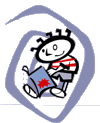 |
 |
 |


|
The Secret of the Labyrinth by C.J. Lewis is a charming little book for children of about ten – at least, that’s the age of the main character, Edward. He leads a pretty mundane existence, living
with a woman he calls mother but isn’t and her two daughters, whom he hardly ever sees. He has chores in the morning, goes to school,
then spends most of the rest of the day in the library. He has a kind neighbor and the librarian is nice to him – that’s as close to friends as he’s got. Then one day his “family” doesn’t
come back, and he has to start making plans. Researching the house he lives in uncovers a secret that leads him on a journey to a new world – or at least
to a whole new way of life. Joining him will be a girl and
her younger brother who have come in the same way but from a
completely different direction.
Like the Harry Potter series, this looks like there’s going to be a book for each year in his development at a school of… well, not exactly magic in this case, though I’m not quite sure yet what the difference is. The focus of the training at this particular school is spirituality, more in the sense of self-awareness than an overt expression of belief in God (they “give thanks” a lot but it never actually states who to). In fact, there are a lot of similarities to the Harry Potter books, but the focus is completely different. Lewis started writing because she felt it was a shame that people were reading and watching fantasy to get a sense of spirituality instead of going to their local church
or temple, then had the idea that she could do something with the realm of fiction to raise children’s consciousness of the wider world. Whether or not she achieves this, Lewis
has managed to create an attractive world in the first of her Forrest Tales
Unfortunately, the level of writing and plot development does not really match the
author's lofty ambitions. Lewis writes in very short sentences which, as an adult, I found very annoying, though for very young children makes it an easy read. Challenging vocabulary is also avoided.
There really isn’t all that much conflict in the book, which will appeal to some but bore others. With the scenes depicting the gaining of powers, etc., it’s kind of hard to see exactly what the author is trying achieve.
The whole thing seems shrouded in mysticism and weirdness so that it eventually comes across as magic with a different hat on.
The printing isn’t too bad and the cover design is excellent. There is one page completely missing, which could be a mishap on only my copy (since I’m presuming the publisher is a print-on-demand publisher). The margins are a little too tight for comfort, but the print itself is quite readable. There is a major problem with the scoring in a tournament described in the book – it’s just plain wrong – which together with the other problems really doesn’t help to give this book a good impression. Overall a good try, but the next book in the series will have to be considerably better than this to really be worth reading, and a good deal less derivative, too, if it wants to be taken seriously.
|







|
| |
Dave Seaman/2006 for curled
up with a good kid's book |
|
|
For grown-up fiction, nonfiction and speculative fiction book reviews,
visit our sister site Curled Up With a Good Book (www.curledup.com)
|
|